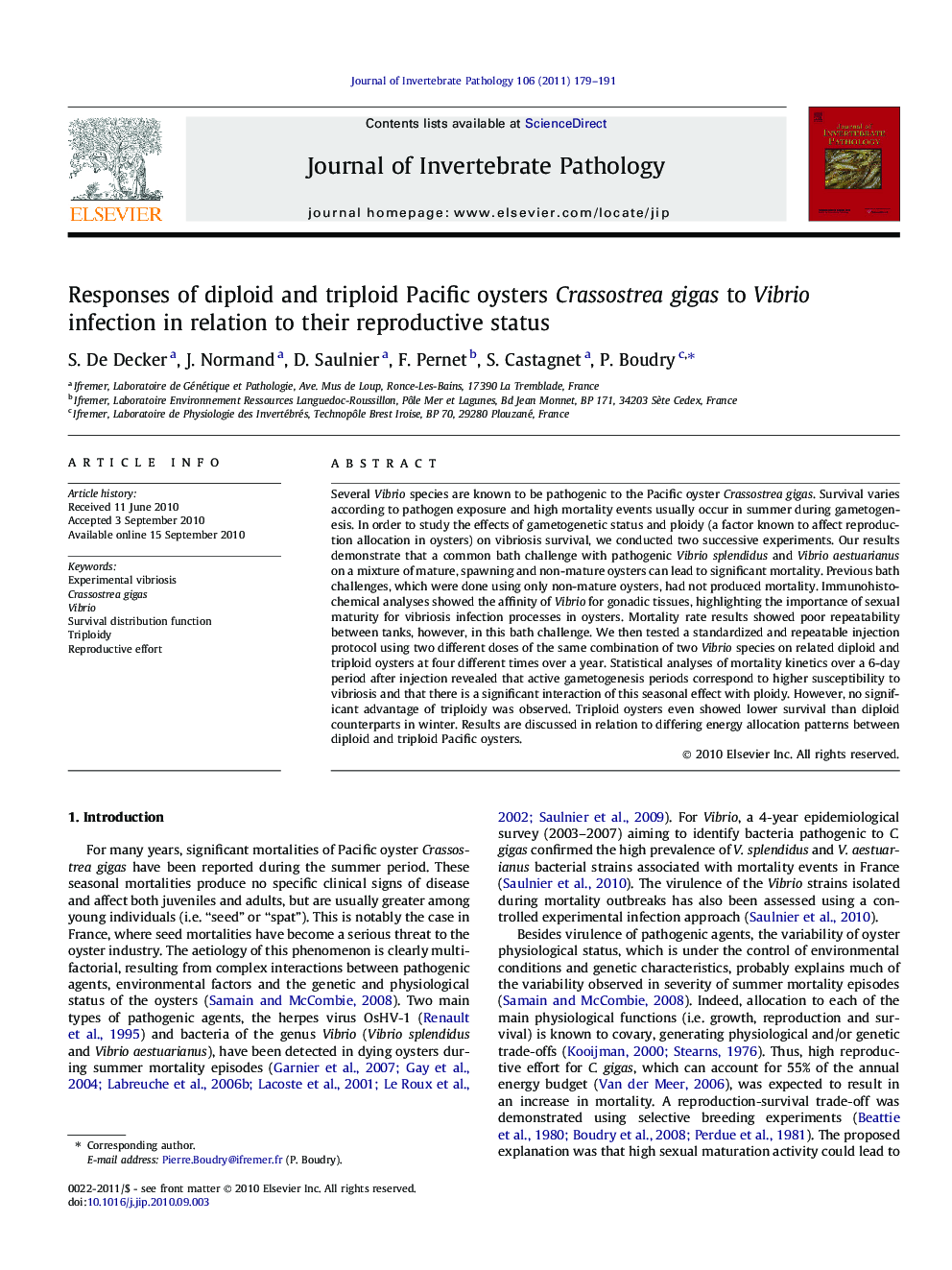| Article ID | Journal | Published Year | Pages | File Type |
|---|---|---|---|---|
| 4558081 | Journal of Invertebrate Pathology | 2011 | 13 Pages |
Several Vibrio species are known to be pathogenic to the Pacific oyster Crassostrea gigas. Survival varies according to pathogen exposure and high mortality events usually occur in summer during gametogenesis. In order to study the effects of gametogenetic status and ploidy (a factor known to affect reproduction allocation in oysters) on vibriosis survival, we conducted two successive experiments. Our results demonstrate that a common bath challenge with pathogenic Vibriosplendidus and Vibrio aestuarianus on a mixture of mature, spawning and non-mature oysters can lead to significant mortality. Previous bath challenges, which were done using only non-mature oysters, had not produced mortality. Immunohistochemical analyses showed the affinity of Vibrio for gonadic tissues, highlighting the importance of sexual maturity for vibriosis infection processes in oysters. Mortality rate results showed poor repeatability between tanks, however, in this bath challenge. We then tested a standardized and repeatable injection protocol using two different doses of the same combination of two Vibrio species on related diploid and triploid oysters at four different times over a year. Statistical analyses of mortality kinetics over a 6-day period after injection revealed that active gametogenesis periods correspond to higher susceptibility to vibriosis and that there is a significant interaction of this seasonal effect with ploidy. However, no significant advantage of triploidy was observed. Triploid oysters even showed lower survival than diploid counterparts in winter. Results are discussed in relation to differing energy allocation patterns between diploid and triploid Pacific oysters.
Graphical abstractImmunohistochemistry revealed that Vibrio showed affinity for gonadic tissues.Figure optionsDownload full-size imageDownload as PowerPoint slideResearch highlights► A bath challenge with pathogenic Vibrio on mature oysters led to significant mortality. ► Immunohistochemistry revealed that Vibrio showed affinity for gonadic tissues. ► Active gametogenesis periods correspond to high susceptibility to experimental vibriosis. ► Triploid oysters did not show higher resistance than diploid to experimental vibriosis.
